Now Accepting Contributions from Fellow Resistance Fighters
by Dr. Mark David Major, AICP, CNU-A, The Outlaw Urbanist Founder
We founded The Outlaw Urbanist almost five years ago. During that time, we have produced more than 220 posts of freely-available content on the blog about architecture and urbanism across a vast range of issues as well as nearly 4,000 tweets on the @OutlawUrbanist Twitter feed.
We have also produced two volumes of the Poor Richard almanac series for architects and planners (available for purchase by clicking on the links to your right) with three more books (American cities, Poor Richard Volume 3, and Collected Essays) on the way. We have also produced more than 20 hours of professional development, continuing education and training classes, either exclusively on The Outlaw Urbanist Courses website or in partnership with Planetizen Courses.
In that time, we have found many valuable allies such as Andy Boenau of Urbanism Speakeasy, the people at Planetizen, and many members of the CNU and Space Syntax communities even as powerful entities with a vested interest (often purposefully obscured) in perpetuating the status quo continue to work against our message. Most definitely, we sometimes feel grind down by this fight; much like Patrick McGoohan’s Number Six in The Prisoner above. However, we often receive encouraging messages from users such as this Canadian academic researcher only last week:
“I am writing you a brief note to say how inspired I am by your blog and manifesto — I agree wholeheartedly… I had this great feeling again today when I found your work.”
Such messages are ‘manna from heaven’ for us. However, believe it or not, The Outlaw Urbanist content has been produced on a shoestring budget over the last five years. A reasonable estimate is we spend about $500 per annual in out-of-pocket costs to offer the (mostly) free content on The Outlaw Urbanist. The rest is brain power, elbow grease, and lots, lots, lots and LOTS of time.
 We have reached the point where we need to ask for your help. There are a lot of upgrades we would like to implement on The Outlaw Urbanist but for a lack of funds: upgrade our hosting service package to speed up loading of the website, offer a monthly newsletter through the facilities of Paper.il to share more content, jointly produce continuing education courses and podcasts with Urbanism Speakeasy, securing pre-approved credits for courses with various professional organizations (for which we will be charged) and, eventually, switching over to an annual subscription-based platform for The Outlaw Urbanist Courses instead of the current ‘per class’ cost structure.
We have reached the point where we need to ask for your help. There are a lot of upgrades we would like to implement on The Outlaw Urbanist but for a lack of funds: upgrade our hosting service package to speed up loading of the website, offer a monthly newsletter through the facilities of Paper.il to share more content, jointly produce continuing education courses and podcasts with Urbanism Speakeasy, securing pre-approved credits for courses with various professional organizations (for which we will be charged) and, eventually, switching over to an annual subscription-based platform for The Outlaw Urbanist Courses instead of the current ‘per class’ cost structure.
We have introduced a “Donate with PayPal” button to our content sidebar (at the upper right-hand corner) to enable our users to financially support The Outlaw Urbanist. PayPal allows you to make donations using your debit or credit card.
We are asking for donations to support our continuing efforts. We appreciate receiving any donations, no matter how small or large, for that purpose. We are creating a special category called The Founders Circle for anyone who makes a donation of $1,000 or more on an annual basis, which includes prominent display of your business, personal, or organizational logo with a link to your website.
Please support The Outlaw Urbanist today with your donation!
NOTE: We would be remiss if we did not mention everyone involved with the open resource platforms of WordPress, LearnPress, and many other associated plugins, which indirectly support the efforts of The Outlaw Urbanist. Thank you!
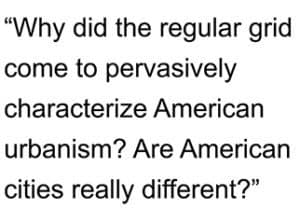 However, in more important ways, American cities are still subject to the same processes linking street networks and human use found in all cities of the world.
However, in more important ways, American cities are still subject to the same processes linking street networks and human use found in all cities of the world.


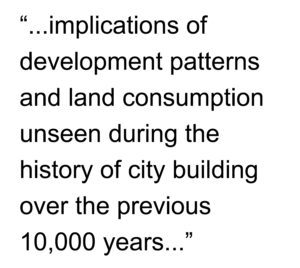 and 3) the consequences of government regulations, Euclidean zoning, modern transportation planning, and suburbanization during the post-war period in generating a hierarchal grid logic to the American regular grid planning tradition. The implications of development patterns and land consumption unseen during the history of city building over the previous 10,000 years are discussed.
and 3) the consequences of government regulations, Euclidean zoning, modern transportation planning, and suburbanization during the post-war period in generating a hierarchal grid logic to the American regular grid planning tradition. The implications of development patterns and land consumption unseen during the history of city building over the previous 10,000 years are discussed.
 We have reached the point where we need to ask for your help. There are a lot of upgrades we would like to implement on The Outlaw Urbanist but for a lack of funds: upgrade our hosting service package to speed up loading of the website, offer a monthly newsletter through the facilities of
We have reached the point where we need to ask for your help. There are a lot of upgrades we would like to implement on The Outlaw Urbanist but for a lack of funds: upgrade our hosting service package to speed up loading of the website, offer a monthly newsletter through the facilities of 
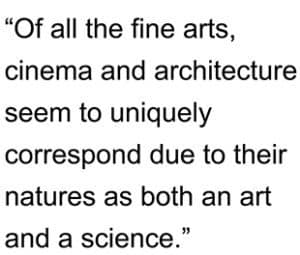 Part I reviews the conceptual, historical and technological correspondence between cinema and architecture. Parts II and III reviews filmmakers’ use of architectural typologies of space and form to craft distinctive film-grammars in service to cinematic narratives. Key concepts: film, narrative, artificial intelligence, CGI, technology, simulation, scale, historical precedent, architectural typology, and hyper-reality. Available soon to separately purchase as 2.0 hour courses ($14.99 each) or a 6.0 hour course series package ($39.99).
Part I reviews the conceptual, historical and technological correspondence between cinema and architecture. Parts II and III reviews filmmakers’ use of architectural typologies of space and form to craft distinctive film-grammars in service to cinematic narratives. Key concepts: film, narrative, artificial intelligence, CGI, technology, simulation, scale, historical precedent, architectural typology, and hyper-reality. Available soon to separately purchase as 2.0 hour courses ($14.99 each) or a 6.0 hour course series package ($39.99).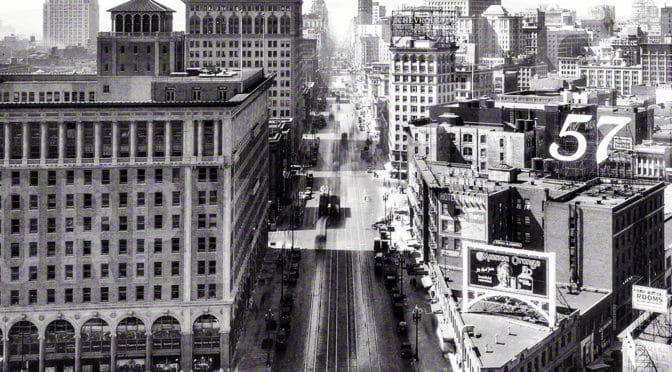
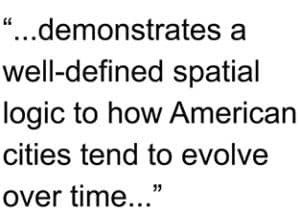 By understanding these concepts, we can better understand how “bedrock” urban attributes (such as block size and dwelling entrances) and common growth trends (such as strip malls and leapfrog development) play a role in the spatial logic of American cities. The objective of this course is to better understand the spatial implications of design decisions when intervening in the American city.
By understanding these concepts, we can better understand how “bedrock” urban attributes (such as block size and dwelling entrances) and common growth trends (such as strip malls and leapfrog development) play a role in the spatial logic of American cities. The objective of this course is to better understand the spatial implications of design decisions when intervening in the American city.